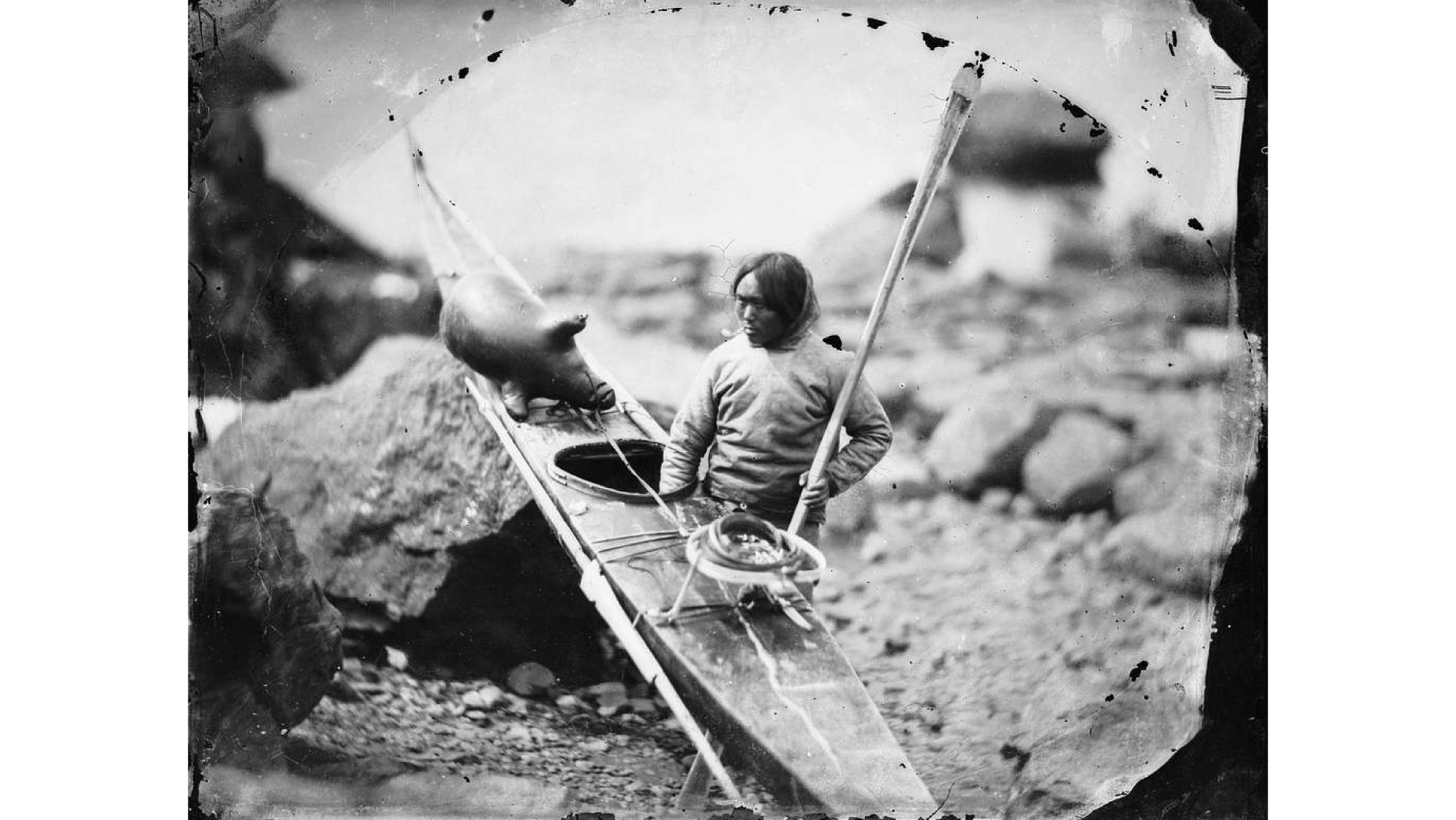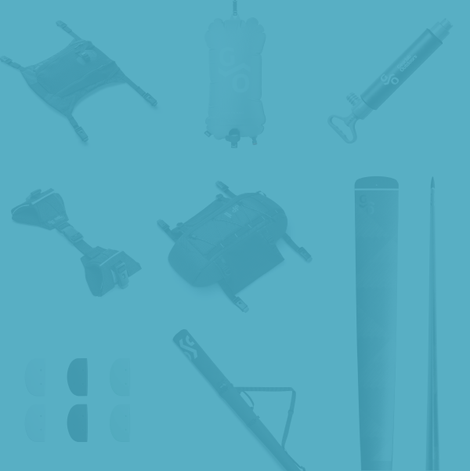A Little History of Greenland Paddle
By Gearlab Outdoors

Left Photo by William James Topley / Right Photo by Richard S. Finnie
To the uninitiated, the sight of a kayaker using a Greenland paddle, the ancient tool of the Inuits (the pioneers of kayaking not as a simple sport or recreational activity, but as an essential survival skill and a way of life) is a strange one. To those only familiar with the more common ‘Euro-blade’ paddles it appears as though the Greenland paddler is using a simple stick, which surely cannot be anywhere near as effective as a normal paddle. How wrong they are.
The Greenland paddle, rather than being an outdated anachronism, is in fact the cutting-edge of hydrodynamic science, a tool which was both invented and evolved by the masters of kayaking and which has slowly been improved upon ever since. Its magic lies in the simplicity and symmetry of the basic design, long, narrow blades, gently tapered, run seamlessly into the loom (shaft). Slim enough in profile that the paddle can be comfortably gripped at any point along its length and that, whatever angle it is held at, will catch next to no resistance from the wind. While traditionally made from wood, modern greenland paddles such as those crafted here at Gearlab Outdoors, take advantage of the strength and lightness of carbon fiber and other materials to further add to the effectiveness of these tools.
Whereas Euro-blade paddles emerged during the 1920s in Austria and Germany during a boom in the popularity of white water kayaking, we have to travel much further back in time to discover the origins of the Greenland paddle, where we meet the fathers of kayaking, the Inuits of Greenland, who remain to this day the true masters of the sport. Inuits have been making kayaks and paddles for at least 5000 years and were highly skilled in the shaping of wood. Due to the lack of lumber, they relied primarily on salvaged driftwood to craft their paddles, which may explain the narrow shape and unique design.

Photo by National Maritime Museum, London
But, to truly understand the power of the Greenland paddle it is helpful to consider the setting and conditions Inuit subsistence hunters operated in. For Inuit seal hunters, kayaking was not a pursuit of pleasure or competitive sport, but rather an essential survival skill honed in some of the most hostile maritime conditions imaginable. In the turbulent, frigid waters of the Arctic, long before the days of dry suits, capsizing and prolonged immersion meant certain death. The ability to quickly and efficiently roll a kayak was therefore critical to staying alive and the Inuits were experts at utilising the leverage of their paddles to roll in a seemingly effortless fashion. Kayak rolling among Inuits was first recorded by European sailors in the 16th century and, to this day, the annual Greenland Championship celebrates this heritage with kayakers from around the world competing in rolling competitions. Today, both rolling and touring remain two of the Greenland paddle’s key strengths over rival designs.



